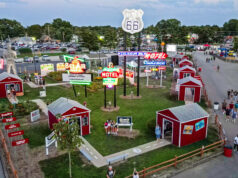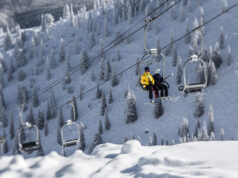Photo credit: Sean Davey
Around a third of Kosciuszko National Park will be preserved for “heritage” brumbies as part of a new management plan that aims to cut the number of feral horses in the national park from an estimated 14,000 to 3000 over six years.
The Draft Kosciuszko National Horse Wild Horse Heritage Management Plan was released for public consultation on Friday, three years after the previous draft management plan was scrapped by NSW Deputy Premier John Barilaro, who instead introduced legislation protecting the horses on heritage grounds. Ground shooting and aerial mustering of horses will be permitted for the first time, but aerial culling – not used in NSW national parks since 2000 – remains off the agenda.
NSW Environment Minister Matt Kean said the new management plan represents a way forward for feral horse management in the national park, after years of deadlock.
“I recognise there are very strong and diverse views on this issue but at the heart of these views is a common desire to sustainably manage the park for the future,” Mr Kean said.
“This draft plan provides protections for one of the nation’s most precious environments and all of the animals that call it home, but more importantly it provides that much needed way forward.”
Under the new plan 32 per cent of the park will set aside for horses. These areas include Currango Plain and Long Plain in the northern area of the park, and the Pilot and Byadbo Wilderness areas at the southern end, including the source of the Murray River. Horses will be removed from 21 per cent of the park, and just under half of the park currently free of horses will be kept that way. The target date for the reduction is 30 June 2027.
Brumby numbers have skyrocketed in recent years, from an estimated 6000 in 2014 to over 14,000 last year, and are increasing at around 20 per cent each year. Since 2018 only 800 horses have been removed – the majority rehomed. Earlier this year it was revealed NSW National Parks and Wildlife Service had released more than 250 trapped horses back into the park, mostly pregnant mares and mares with young foals.
The 2016 draft management plan, which was never enacted, called for a reduction to 600 horses over a 20-year period. Subsequent spiralling of numbers means that thousands more horses now face culling to reduce the current number to 3000.
Invasive Species Council conservation director James Trezise says the plan represents “significant progress” but will not prevent long-term damage by horses to the national park.
“Feral horses damage sensitive ecosystems and harm unique wildlife in Kosciuszko. The plan falls short in rejecting the most effective control method – aerial shooting – necessary in rugged parts of Kosciuszko,” Mr Trezise said.
The plan acknowledges that aerial shooting “can have the lowest negative animal welfare impacts of all lethal control methods,” however would result in a “loss of social licence.” An aerial cull of 606 feral horses in Guy Fawkes National Park in northern NSW in 2000 provoked an angry public backlash, despite an independent report finding the cull was humane and professional. The method is widely used across northern Australia, is permitted in the ACT and was recently included as a management option in Victoria, part of the state’s new Draft Feral Horse Action Plan.
The draft plan is open for public comment until 2 November.
Read the story here



